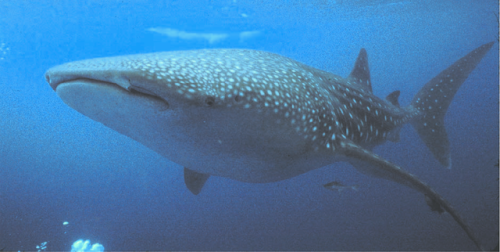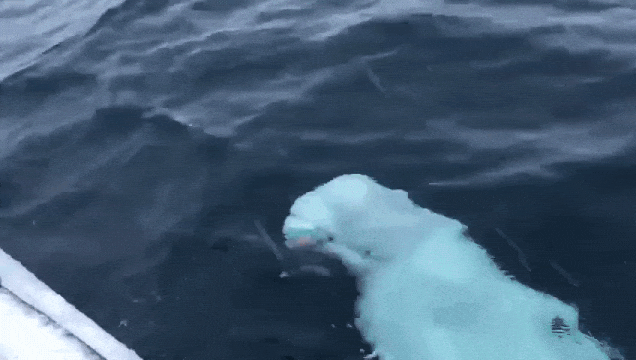Waves Crashing Sunset By Scraft | More

Waves Crashing Sunset By Scraft | More
More Posts from Simplyphytoplankton and Others

FROM PANAMA TO MARIANA TRENCH: FEMALE WHALE SHARK MADE A RECORD!
For two and a half years, scientists followed the movements of Anne, a whale shark, during which she swam from the coast of Central America to the Mariana Trench.
In 2011, researchers put a transmitter on Anne near Coiba Island in Panama. In the following 841 days, Anne’s transmitter sent a signal to the ARGOS satellite when it swam close to the surface. These trasmitter allowed the team to follow its movements to the south to the Galapagos Islands and throughout the Pacific to the Mariana Trench, to the south of Japan and the east of the Philippines. She traveled a distance of 20142 kilometers.

-Whale shark route from Panama to the Mariana Islands (black track) tagged in September 2011, and old record from Mexico to the Marshall Islands (red track, tagged in September 1995).
The finding reinforces the position of the whale shark as one of the animals that travels most, along with leatherback turtle, gray whale and the arctic tern. In 2016, the IUCN cataloged the species for the first time as threatened. Biologists calculate that tropical and subtropical seas have less than half of whale sharks that they had 75 years ago, which increases the urgency of their protection.
Read also: This is why whale shark aggregate just in 20 sites!
Photo: A whale shark at Gladden Spit, Belize. Source Heyman et al.,2001.
Reference (Open Access): Guzman et al., 2018. Longest recorded trans-Pacific migration of a whale shark (Rhincodon typus). Marine Records

As it is Halloween here’s a still unsolved natural mystery.
Located in Judge C.R. Magney State Park, Minnesota, there is an unsolved geological mystery nicknamed The Devil’s Kettle. Mid way along the Brule River that runs through the Park the river splits in two to go around an outcrop of rhyolite. Here’s where it gets interesting, the split flows produce 2 waterfalls along side each other. The eastern flow drops around 15m (50ft) into a pool and continues off down stream. The western flow however drops 3m (10ft) into a pothole disappearing underground.
Keep reading


NSF cancels grant reviews due to WH executive order
The National Science Foundation (NSF)—the major funding agency for basic science—has canceled all grant review panels this week to comply with an executive order from the new administration. This is where independent panels of scientists discuss grant proposals they’ve reviewed for scientific merit and recommend which projects get funded to NSF project managers. A LOT of work goes into setting up and scheduling grant reviews. It will take time to reschedule these panels, delaying key decisions for many promising projects. This will wreak havoc on science grant funding for months to come.
Put simply, this action along with the halting of NIH-funded grants are blatant and reckless political attacks on science, from an administration that seeks blinding loyalty.


Friendly Beluga Whale Plays Fetch With Crew of a South African Ship Using a 2019 Rugby World Cup Ball
Sky Walk on Puente 3 (Bridge 3) in Monteverde, Costa Rica

🐚🐚🐚

Silence and calmness can be extremely moving. #Whale #MexicoPelagico #PelagicLife #ocean #nature #whale #underwater #mexico Photo by @rodrigofriscione
-
 yasu8369 liked this · 1 year ago
yasu8369 liked this · 1 year ago -
 ultrameganicolaokay liked this · 1 year ago
ultrameganicolaokay liked this · 1 year ago -
 copen7133 liked this · 2 years ago
copen7133 liked this · 2 years ago -
 paulsohrab liked this · 3 years ago
paulsohrab liked this · 3 years ago -
 juliobrandao liked this · 3 years ago
juliobrandao liked this · 3 years ago -
 axpleet liked this · 3 years ago
axpleet liked this · 3 years ago -
 491632lago liked this · 4 years ago
491632lago liked this · 4 years ago -
 posvecenotebi reblogged this · 4 years ago
posvecenotebi reblogged this · 4 years ago -
 posvecenotebi liked this · 4 years ago
posvecenotebi liked this · 4 years ago -
 rebel-heart-gypsysoul liked this · 4 years ago
rebel-heart-gypsysoul liked this · 4 years ago -
 mindnot-that-much reblogged this · 4 years ago
mindnot-that-much reblogged this · 4 years ago -
 mindnot-that-much liked this · 4 years ago
mindnot-that-much liked this · 4 years ago

Blog dedicted to phytoplankton. Phytoplankton are microscopic organisms that are responsible for half of the photosynthesis that occurs on Earth. Oh, and they look like art... Follow to learn more about these amazing litter critters! Caution: Will share other ocean science posts!Run by an oceanographer and phytoplankton expert. Currently a postdoctoral researcher.Profile image: False Colored SEM image of Emiliania huxleyi, a coccolithophore, and the subject of my doctoral work. Credit: Steve Gschmeissner/ Science Photo Library/ Getty ImagesHeader image: Satellite image of a phytoplankton bloom off the Alaskan Coast, in the Chukchi SeaCredit: NASA image by Norman Kuring/NASA's Ocean Color Web https://earthobservatory.nasa.gov/images/92412/churning-in-the-chukchi-sea
158 posts